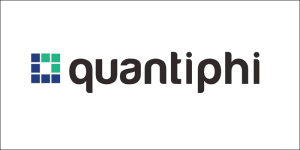AWS Partner Network (APN) Blog
How Quantiphi Breaks Through Machine Learning Bottlenecks with NeuralOps
By Palash Nimodia, Principal ML Architect – Quantiphi
By Vaidehi Satone, Sr. Business Analyst – Quantiphi
By Matt Chastain, Sr. Partner Solutions Architect – AWS
 |
| Quantiphi |
 |
The challenges around artificial intelligence (AI) and machine learning (ML) have evolved significantly over the last few years.
Organizations have matured and have overcome the initial hurdles of proving the capabilities of AI. The challenge now is operationalizing AI and building engineering excellence to successfully adopt and manage ML at scale.
This post covers a success story where Quantiphi assisted Venterra Realty in bringing in the best machine learning solution development and deployment practices through NeuralOps—a framework built on Amazon SageMaker.
Quantiphi is an AWS Premier Tier Services Partner with the Machine Learning Consulting Competency that offers professional services tailored to specific industries and use cases.
MLOps Expertise for Venterra Realty
Venterra Realty is a premier real estate investment firm specializing in developing, financing, and managing multi-family residential communities in the United States and Canada.
Despite having a central data science team specializing in building and deploying machine learning models, core ML engineering was not Venterra Realty’s main expertise.
Its data science team was adept at solving business problems through ML but faced issues in automating machine learning workflows on Amazon Web Services (AWS) and managing them long-term. Some of the team’s challenges included:
- Teams were training and inferencing models manually through Amazon SageMaker notebooks.
- Containers, orchestration tools, or integration with code repositories were not used.
- Over-dependence on raw Amazon CloudWatch logs for historical tracing of training and inference executions.
Challenges in the Current State
While the challenges voiced by the customer to Quantiphi often focused on machine learning process automation, the real remedy was not limited to mere automation. Other problems would have emerged slowly but surely.
How could these unforeseen challenges have looked?
- As enterprises grow and adopt machine learning, redundant efforts become commonplace in engineering and automating processes for every model. Minimizing this redundancy is important for an ML professional.
- As teams automate ML processes suited to one use case, how do you ensure best practices across the enterprise?
- Data executives typically have little to no real-time visibility into different ML initiatives. How can you help them see where they are in the overall lifecycle of each ML initiative?
- As enterprises grow, how do you minimize the AI risks and consciously think about responsible AI principles?
Solution Overview
To help the customer in its current ML process automation and set a strong foundation for long-term success of machine learning initiatives, Quantiphi deployed a packaged solution built on top of Amazon SageMaker called NeuralOps.
NeuralOps is a framework that helps deploy and manage ML solutions. It’s a centralized platform that supports machine learning and deep learning algorithms, applicable across business use cases. The solution facilitates users to train, deploy, and manage the entire lifecycle of ML solutions across various domains, such as computer vision, natural language processing (NLP), statistics, and time series.
Machine learning today might include redundant automation by engineers. There’s often a lack of standard architectural pattern of solution automation, little awareness regarding the best practices for ML solution deployment, and no transparency of ML assets across the enterprise.
A centralized platform like NeuralOps consists of well-governed workflows which allow enterprises to organize their ML assets and streamline solution development and deployment. The platform automates over 90% of the most common ML tasks with ready-to-use prepackaged components.
Need for a Centralized ML Operation Platform
Quantiphi has been working with large enterprises to help build, deploy, and manage ML solutions into core business processes. The team has learned that two key factors influence the outcome of a machine learning initiative:
- The skills required to quickly hack an innovative ML solution in a lab or experimental setting differ significantly from those needed to deploy and manage large-scale ML solutions. For developing proof of concepts, one needs strong ML skills to translate AI research into a practical business solution. It would help if you also had strong engineering expertise for large-scale operations for reliable cloud deployments.
- The governance framework for the deployment and long-term management of ML solutions is critical.
A centralized platform encourages and enables all stakeholders involved in the end-to-end lifecycle of ML solutions to follow best practices. Since there is little knowledge of platforms dedicated to long-term operations management of ML solutions, Quantiphi built NeuralOps.
The core idea is to make the lives of various stakeholders involved in ML solution development a little easier. Here, governed workflows ensure proper processes and best practices are followed behind the scenes.
Figure 1 – Functional block diagram of NeuralOps.
How NeuralOps Helped Venterra Realty
NeuralOps enables transparency, modularity, reproducibility, and reliability. Following are a few examples of benefits provided to Venterra Realty by Neural Ops:
- NeuralOps allows Venterra Realty to manage the build, test, deployment, and long-term operationalization of its ML initiatives.
- NeuralOps provides pre-packaged components that help Venterra Realty productionalize its ML models in days rather than months. Venterra was able to use regression and classification algorithms and vectorization components from the pre-packed library of NeuralOps.
- Time to productionalize an additional use case of lease renewal was reduced to one week from four weeks.
- NeuralOps allowed Venterra to create unique components for its specific business use cases. The following components were built:
- Preprocessing: For niche data preparation related to the use case Quantiphi was trying to solve.
- Monitoring: Component for specific metrics to be used for monitoring data drift for the use case.
- Explainability: Component for generating feature importance report in a manner interpretable by the business.
- Components and pipelines built for one business use case on NeuralOps can easily be reused for another. The team was able to reuse the training and inference pipelines from the library, retaining their overall structure and adding some minor modifications in the orchestration.
- Governed workflows ensure reusability is encouraged and approved architectural patterns are deployed.
- Venterra Realty now has complete visibility and traceability of actions on any ML initiative on NeuralOps.
Zahra Kharal, an ML Engineer responsible for implementing AI/ML projects at Venterra Realty said, “Quantiphi helped us considerably with our AI/ML processes by implementing the best MLOps practices. The new infrastructure automated and streamlined our AI/ML development and deployment lifecycles, making us much more productive—the time it took us to put a model in production has now been considerably reduced.”
Deployment and Configuration
NeuralOps came pre-packaged in the form of AWS CloudFormation templates and did the heavy lifting of deploying any solution. Items that need to be configured for any deployment included:
- AWS Identity and Access Management (IAM) policies and roles addition for NeuralOps.
- Integration with the source code version control system for the customer.
- Single sign-on (SSO) integration for the customer.
The client had selected a particular business use case of salary prediction, which needed to be onboarded and built on the NeuralOps framework. The idea was to test the breadth of functionality and flexibility of the NeuralOps framework.
One team from Quantiphi was focused on deploying core NeuralOps infrastructure on the customer AWS account. Simultaneously, another team identified the right components and pipelines required to deploy the machine learning use cases.
Some pre-packaged components and pipelines were utilized, and some custom components were built for the specific ML use case.
In a matter of weeks, the Quantiphi team deployed NeuralOps and successfully onboarded one machine learning use case with end-to-end automation, and provided knowledge transfer to the customer. Quantiphi also trained the customer on long-term management of the solution to make best use of its workflows and logging mechanism.
Conclusion
As machine learning becomes more pervasive across enterprises, the number of models data scientists and ML engineers need to manage will continue to grow. With every new model adopted by an enterprise, operational challenges to ensure the viable success of each model will compound.
A centralized platform like Quantiphi’s NeuralOps helps enterprises by providing modularity for developers, visibility for data science leadership, and best practice compliance for technology architects.
Quantiphi – AWS Partner Spotlight
Quantiphi is an AWS Premier Tier Services Partner with the Machine Learning Consulting Competency that offers professional services tailored to specific industries and use cases.
Contact Quantiphi | Partner Overview | AWS Marketplace | Case Studies

